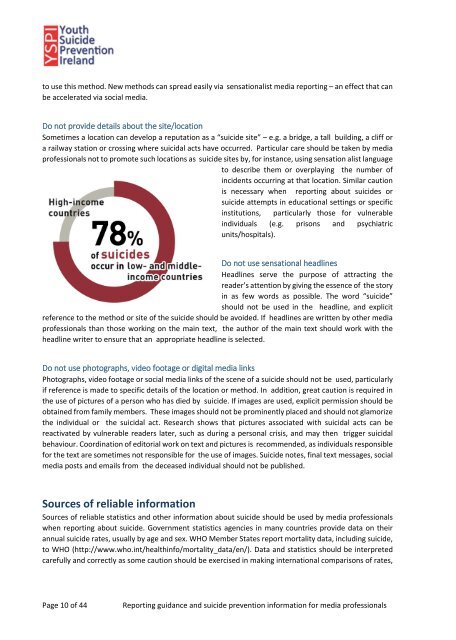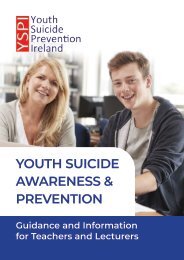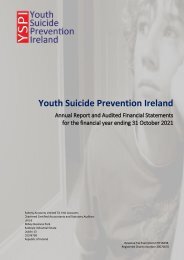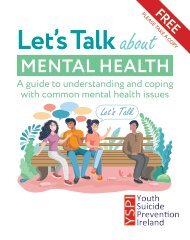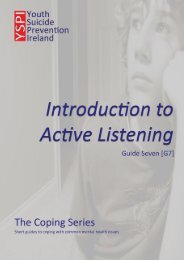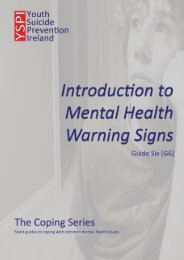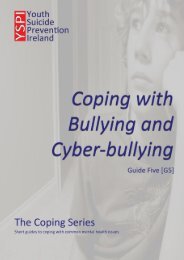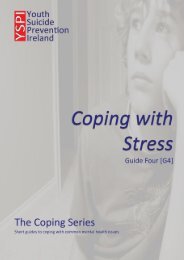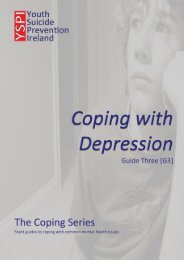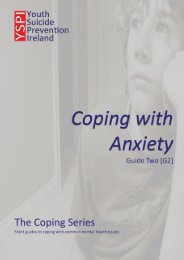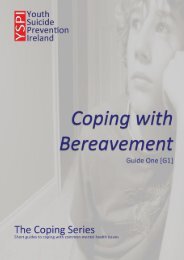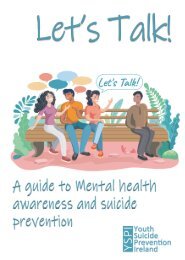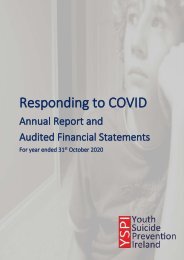You also want an ePaper? Increase the reach of your titles
YUMPU automatically turns print PDFs into web optimized ePapers that Google loves.
to use this method. New methods can spread easily via sensationalist media reporting – an effect that can<br />
be accelerated via social media.<br />
Do not provide details about the site/location<br />
Sometimes a location can develop a reputation as a “suicide site” – e.g. a bridge, a tall building, a cliff or<br />
a railway station or crossing where suicidal acts have occurred. Particular care should be taken by media<br />
professionals not to promote such locations as suicide sites by, <strong>for</strong> instance, using sensation alist language<br />
to describe them or overplaying the number of<br />
incidents occurring at that location. Similar caution<br />
is necessary when reporting about suicides or<br />
suicide attempts in educational settings or specific<br />
institutions, particularly those <strong>for</strong> vulnerable<br />
individuals (e.g. prisons <strong>and</strong> psychiatric<br />
units/hospitals).<br />
Do not use sensational headlines<br />
Headlines serve the purpose of attracting the<br />
reader’s attention by giving the essence of the story<br />
in as few words as possible. The word “suicide”<br />
should not be used in the headline, <strong>and</strong> explicit<br />
reference to the method or site of the suicide should be avoided. If headlines are written by other media<br />
professionals than those working on the main text, the author of the main text should work with the<br />
headline writer to ensure that an appropriate headline is selected.<br />
Do not use photographs, video footage or digital media links<br />
Photographs, video footage or social media links of the scene of a suicide should not be used, particularly<br />
if reference is made to specific details of the location or method. In addition, great caution is required in<br />
the use of pictures of a person who has died by suicide. If images are used, explicit permission should be<br />
obtained from family members. These images should not be prominently placed <strong>and</strong> should not glamorize<br />
the individual or the suicidal act. Research shows that pictures associated with suicidal acts can be<br />
reactivated by vulnerable readers later, such as during a personal crisis, <strong>and</strong> may then trigger suicidal<br />
behaviour. Coordination of editorial work on text <strong>and</strong> pictures is recommended, as individuals responsible<br />
<strong>for</strong> the text are sometimes not responsible <strong>for</strong> the use of images. Suicide notes, final text messages, social<br />
media posts <strong>and</strong> emails from the deceased individual should not be published.<br />
Sources of reliable in<strong>for</strong>mation<br />
Sources of reliable statistics <strong>and</strong> other in<strong>for</strong>mation about suicide should be used by media professionals<br />
when reporting about suicide. Government statistics agencies in many countries provide data on their<br />
annual suicide rates, usually by age <strong>and</strong> sex. WHO Member States report mortality data, including suicide,<br />
to WHO (http://www.who.int/healthinfo/mortality_data/en/). Data <strong>and</strong> statistics should be interpreted<br />
carefully <strong>and</strong> correctly as some caution should be exercised in making international comparisons of rates,<br />
Page 10 of 44<br />
<strong>Reporting</strong> guidance <strong>and</strong> suicide prevention in<strong>for</strong>mation <strong>for</strong> media professionals


